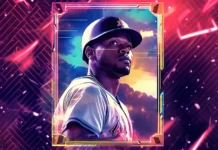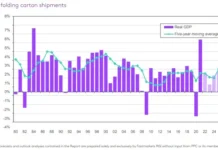By Sabine Lenz, PaperSpecs
Each year, a handful of printing and finishing techniques set the industry on fire, transforming the way designers create their work and spread their message – and even the way they think. If you’re looking for a way to help your clients jumpstart their creativity while giving you a competitive edge, you really can’t afford to ignore them.
1. Hand-sewn look and feel
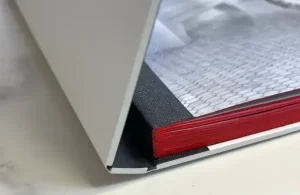 We all like to feel we are part of a select few; that we have come across something rare and handcrafted – that we are one of the lucky ones to get our hands on it. While by no means purely handmade, Singer sewn and exposed Smyth binding convey this feeling to clients and consumers, and that’s what matters.
We all like to feel we are part of a select few; that we have come across something rare and handcrafted – that we are one of the lucky ones to get our hands on it. While by no means purely handmade, Singer sewn and exposed Smyth binding convey this feeling to clients and consumers, and that’s what matters.
The handmade look and feel instantly gives them a sense of the product and company – its culture and history. As a result, they feel a strong connection to the brand. Make this trend your own by using contrasting threads to make it stand out even more.
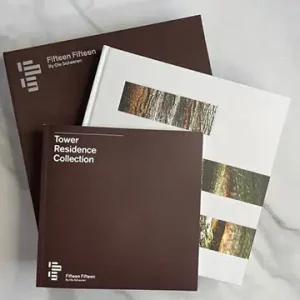 2. High-end binding
2. High-end binding
On the flip side, high-end binding elevates elaborate artbooks and high-end brochures and allows even marketing materials to feel more like coffee table books.
Binding for these is done in the known hard case fashion, with the case being covered in tactile cover materials and embellished with hot foil stamping, or in the increasingly trendy Swiss binding style. Instead of being inserted and mounted in casebound fashion, in Swiss binding the text block is glued right on top of the inside back cover of the book’s case.
While from the outside the book looks like a nice casebound book, once the cover is opened, the text block’s spine is revealed. In most cases, the text block is Smyth bound, yet feel free to use perfect bound or saddlestitched text blocks, too.
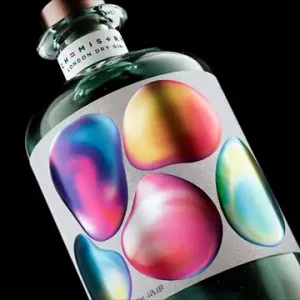 3. Haptic
3. Haptic
In this over-digitalized world where everyone is glued to their smartphone or computer screen, people yearn for a tactile experience. Tactile effects on marketing materials and packaging, in particular, have become increasingly popular. These can stimulate our non-visual senses and create a stronger emotional connection with the product or brand.
The easiest way to add a haptic experience to a printed piece is with our choice of substrate, with classic finishes like linen and laid experiencing a resurgence. Even the choice of printing technique can provide a “built-in” haptic feel. Letterpress printing, especially when using a soft sheet, allows for a nice impression similar to a light deboss, while engraving – where the ink sits on top of the sheet – provides an embossed feel.
And, of course, there are numerous finishing techniques that add that extra tactile experience, from traditional embossing, debossing, raised UV and polymer options to a suite of laminates that offer more than just a soft-touch finish. There also are specialty coatings, including sandpaper and leather textures, that provide intriguing options and can be applied inline.
4. Scent
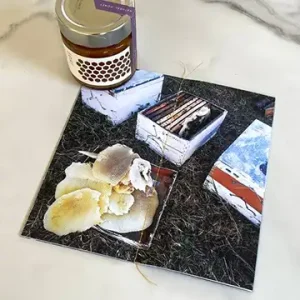 While scented inks have been around for a while, they now are– finally – trendy, from offering an intriguing aroma right out of the box to “scratch-and-sniff” or Rub’nSmell options. Depending on the effect desired, the scent can be added to the coating or varnish and thus applied inline with the print run.
While scented inks have been around for a while, they now are– finally – trendy, from offering an intriguing aroma right out of the box to “scratch-and-sniff” or Rub’nSmell options. Depending on the effect desired, the scent can be added to the coating or varnish and thus applied inline with the print run.
And this is not just for packaging or marketing pieces. All of the trends we are talking about today also are applicable to envelopes. Case in point: Until the end of July 2023, the United States Postal Service is offering the Tactile, Sensory and Interactive (TSI) mail piece promotion, with the goal of encouraging mailers to utilize the power of the senses in their mail pieces to increase response rates.
Lemon, piña colada, leather or… There are so many scents to choose from that enhance the printed piece and tickle the nose.
You can be forgiven for thinking that this is a passing fad, but when companies like Starbucks have their own aroma task force – yep, there is an actual department for this – you should take the science of scent seriously.
5. Vivid colors
As the value of design rises, brands are going crazier than ever with colors in an attempt to stand out from the crowd.
While bold colors have been trending in the online world for a while – thanks to enhanced print technologies, we now see designers going bold, loud and brighter than ever in their printed pieces. The secret sauces (or in our case, inks) are neon or fluorescent inks.
Naturally, you can apply them with traditional printing techniques – offset, letterpress or silk screen. But what’s fueling the popularity of this trend now is the ability to print these colors digitally. Depending on the press provider, you can add neon yellow, pink, orange, violet, green… Encourage your clients to crank up their design’s “look at me” factor by using these vibrant neon colors as spot colors.
But it is not just about the neon effect. It also is about extending the overall color gamut you can achieve. When we are talking 5-, 6- or 7-color printing, we are adding more colors to a conventional 4-color process.
This is popular for two reasons:
- We can increase the overall range of colors, which allows for really rich hues.
- The extra colors (and thus enhanced gamut) can be used to reproduce a special hue that is out of range of the normal CMYK mix; meaning you can match around 94% of Pantone colors.
Thanks to those expanded color options – even in the digital printing world – expect color schemes in 2023 to get even more vibrant and luminous.
6. Shimmer and foil
Metallic effects in design are becoming uber-trendy. From packaging to business cards, the metallic shimmer gives any printed item a luxurious, expensive feel.
Granted, the shimmer that foil brings has been on trend for a while now. But beyond foil stamping, several newer technologies are becoming more widely available, offering creatives new possibilities and creating a resurgence for this high-end look.
From hot and cold foil to metallized substrates and digital foiling options, there is a “shimmer” for every print run and budget.
7. Personalization
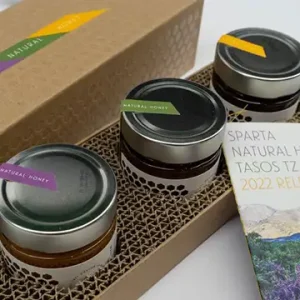 A 2020 McKinsey study found that personalization will be the prime driver of marketing success within five years. Which means, we are just in time.
A 2020 McKinsey study found that personalization will be the prime driver of marketing success within five years. Which means, we are just in time.
Nobody wants to be bothered by irrelevant coupons, emails or texts, but we all do want to be informed of offers that meet our needs. Personalization beyond a simple mail-merge approach offers meaningful, relevant customer communication.
While the technology for this – variable data printing – has been around for a while, few brands are fully embracing it. Successful brands need to focus on good customer data, insightful analytics and, above all, ensuring that they protect customer privacy.
8. Augmented reality (AR)
As you know, AR enhances the user’s perception of the real world by adding a computer-simulated layer of information on top of it. In print, one of the most used interactions is when the activation is triggered by scanning a specific item or “marker.”
But trying to convince customers to download an app can be tricky, let alone providing an app that’s compatible with all the different types of phones and operating systems out there.
That’s why marketers have started looking seriously into WebAR; it may not have the power of full AR, but it still has plenty of potential.
WebAR refers to augmented reality experiences that are accessed through a web browser rather than an app. This means all you need is your smartphone or tablet and an internet connection – no apps required.
With the introduction of ARKit and ARCore (the Apple and Google AR developer platforms) and web-based AR platforms such as the 8th Wall, marketers now have a big opportunity to create innovative campaigns that integrate the digital and physical worlds.
Whether it’s through augmenting product packaging with interactive content, virtual tours in brick-and-mortar shops, or “try before you buy” at-home opportunities (Starbucks and IKEA are two obvious examples), augmented reality is enriching the customer experience digitally in a way that few technologies can.
9. Sustainability
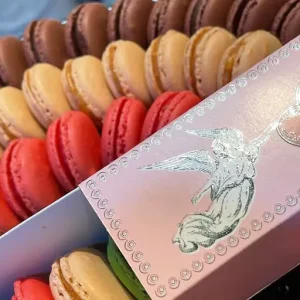 Sustainability is an overarching trend – one that goes beyond recycled paper but encompasses the whole printed piece. No, this trend does not sparkle or shimmer, but I encourage you to be aware of the sustainability, recyclability, etc. of the papers, printing and finishing techniques and embellishments you offer.
Sustainability is an overarching trend – one that goes beyond recycled paper but encompasses the whole printed piece. No, this trend does not sparkle or shimmer, but I encourage you to be aware of the sustainability, recyclability, etc. of the papers, printing and finishing techniques and embellishments you offer.
For any print project this means:
Reduce. The most effective way to reduce waste is to not create it in the first place.
- Right-size. This is not only important to the final cost of the product, but also to its perceived environmental impact.
- Print on demand. Ask yourself: What is the quantity my customer needs right now? What is the longevity of the piece? Thanks to digital printing and finishing, there really is no need to overproduce.
- Reduce overall waste. Here is your chance to help creatives understand how to best utilize a press sheet. They’re eager to be more sustainable and open to your advice.
Reuse. Help your customers explore ways in which they might be able to repurpose their packaging and materials – and, yes, this includes dielines and other tools.
Recycle. From recycled papers to substrates made with recycled jeans, T-shirts and even coffee cups, there is no shortage of innovative materials. Be the one to bring these exciting options to your clients; they will appreciate your forward, sustainable thinking.
And beyond simply using recycled materials, ensure that the packaging or marketing materials you help create are recyclable.
There are misconceptions aplenty about recyclability of transfer foils and laminates, to name just a few. Be ready to provide your clients with insights and statistics to help them understand that we as an industry are pulling in the same direction they are, and we’re doing everything we can to ensure our materials and technologies are used in the most economic and sustainable ways possible.
These are the nine top print design trends, but are they all for you or your clients? Probably not. But mix and match two or more of these trends and you will delight your customers with the opportunities you can provide.
PaperSpecs.com is an innovative online hub for brand owners and graphic designers who actively spec paper and print, and refuse to be limited by short print runs or tight budgets. Through videos, hands-on/virtual “[unboxed]” events, blog posts and more, PaperSpecs provides trends, insights and access to crucial, hands-on tools and resources to help creatives craft printed pieces that WOW their clients. Learn more at www.paperspecs.com/get-weekly-tips.


